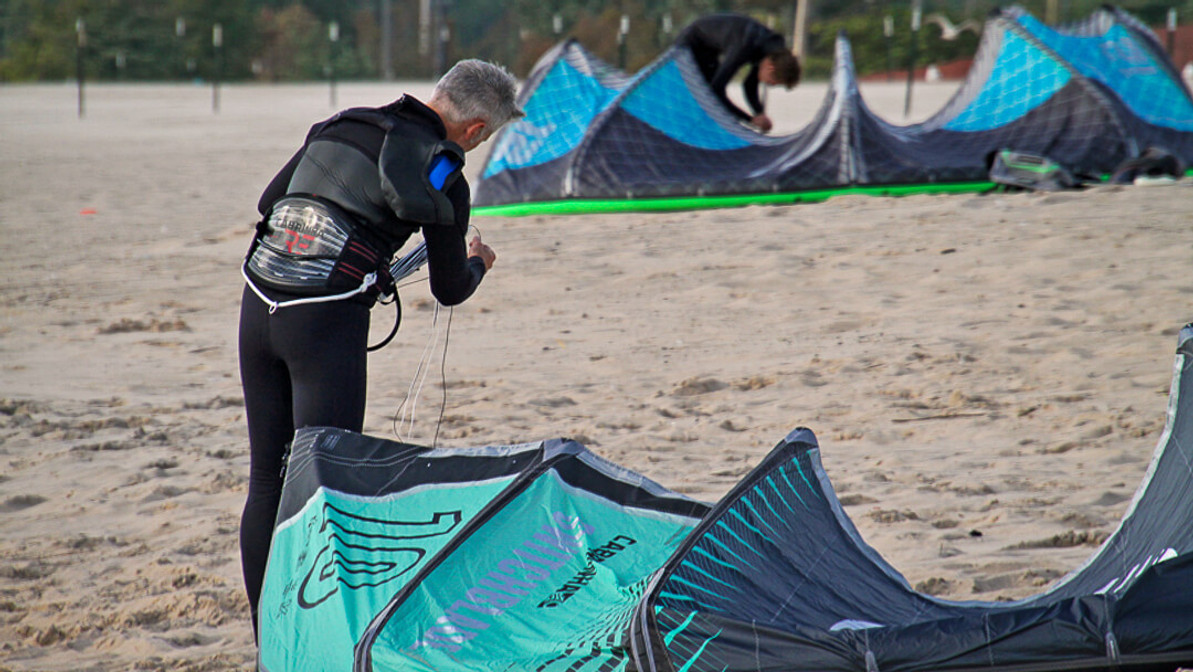How Does a Waist Harness Differ from a Seat or Boardshorts Harness?

If it's your first time picking out a harness (or your fifth), the age-old question always comes to light. “Do I go with a seat or waist harness?” Usually, the best answer is to come in and try it on and feel it out, but if you’re like most of our awesome customers and don't have a kite shop locally accessible, this article should point you in the right direction: upwind.

Beginner Kiteboarders Will Appreciate a Seat Harness
Seat harnesses draw a lot of attention to a wide range of riders, especially those just learning how to kite. The seat harness hugs the hips, and has comfy straps around your legs to keep your harness from riding up and digging into your lower rib cage.
Seat harnesses sit several inches lower than a waist harness, providing a lower “tow point” on the spreader bar location. This will help add stability to your water starts. Not just geared for beginners, seat harnesses can offer a generous amount of comfort for those with back pain.
They’re also starting to appeal to foilers due to the placement of the pressure and ‘seated’ riding position. Taking the weight off of your lumbar and ribcage and moving it down to the lower buttox. Seat harnesses aren't as maneuverable as a waist harness, they're not suitable for unhooked tricks, they're bulkier, and are a bit more constrictive to the rider.

Waist Harnesses Offer Mobility and Versatility
The waist harness is the most popular style among kiters. Extremely popular amongst the wave surfing and freestyle community, and with two different styles available, waist harnesses are the most versatile on the market. The waist harness will fit around the abdomen much like a WWE championship belt, allowing for full leg movement and greater torso maneuverability.
Hardshell waist harnesses are going to be geared for those aggressive riders who demand performance and locked-in lumbar support. Softshell waist harnesses are perfect for those transitioning into a waist harness and those searching for comfort.
Related: What Are the Differences Between Hard Shell and Soft Shell Harnesses?
Some disadvantages are that waist harnesses love to ride up, especially for those who fly their kite at high noon like most new riders, and this can lead to back discomfort.

For all those fashionistas out there, a newer style harness has been gaining traction in the kite community. These have a very “2000’s” swag look and have properly coined the name "boardshorts" harness.
Boardies are a crossover between a seat harness and a waist harness. They offer a low tow point with added lower body flexibility, but also serve as a solid compromise for those not too keen on a seat or waist harness. For all intents and purposes, it’s very comparable to a climbing harness disguised under those board shorts and you look ballin 'walking down the beach!
Boardies aren't going to be as comfortable as a seat harness and won’t offer as much mobility as a waist harness.
Thank you for reading this article. We hope that you've found it to be helpful with your harness search. Please reach out to us with any questions that you may have. We're always happy to help.
Thank you and good winds,
Dustin
Highlights and Takeaways:
-
Seat harnesses are great for beginners
-
Waist harnesses are versatile
-
Boardshort harnesses are a hybrid
Related Links:
Subscription Links:
Click Below to Contact Us:
-
P | 800.622.4655

DC jams to Khruangbin!
Recent Posts
-
Kiteboarding | Crafting the Harlem Force Kite with Sustainability and Performance
Unparalleled Performance Meets Unmatched Sustainability The kiteboarding industry is on …24th Apr 2024 -
Duotone Ventis 2025 | What's New?
If you're familiar with Duotone's Ventis, you know its specialty is freeriding in light wind …23rd Apr 2024 -
Duotone Ventis D/LAB 2025 Overview
If you ride in an area with multiple light wind days and need a wing that'll let you get o …23rd Apr 2024




